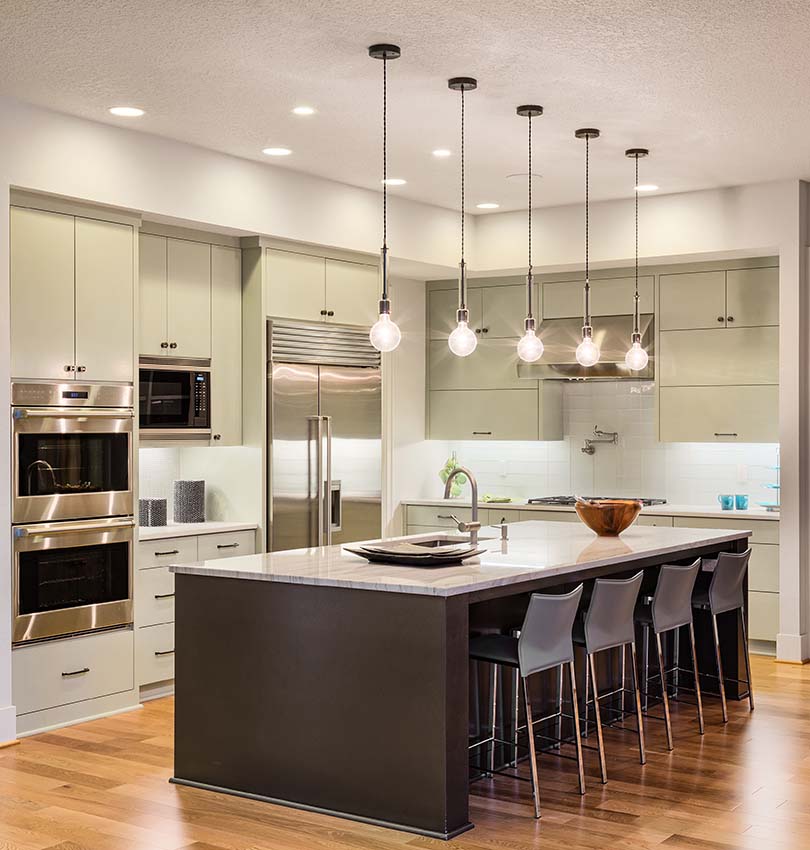It’s here, it’s cool, and if you don’t know much about the concept, it’s time to learn.
We’re talking about Universal Design, the notion that the built environment should be accessible and functional for all people. This means everyone, regardless of age, ability, or size, and in an equitable way.
As a home builder in Durango or Pagosa Springs, it pays to be knowledgeable about Universal Design. It means you may be able to suggest home features that ensure ease of living for clients whatever the future may hold. Prompting this kind of forward thinking can set you apart from other professionals in the Four Corners area.
If you’re a resident planning your dream home in La Plata or Archuleta County, you may at least want to consider Universal Design concepts. You might decide it’s a good idea to include elements that are ultra-welcoming for a variety of people—people who may not live with you or even visit your home today.
The Evolution of Universal Design
The Universal Design (UD) movement has grown out of societal changes beginning in the last century. They include:
- Medical advances that enable soldiers and accident victims to survive in greater numbers;
- More effective treatments for diseases;
- A population living longer than ever; and
- Expanding awareness of the need to serve citizens with disabilities better.
Ronald L. Mace, FAIA, coined the term “Universal Design” in 1985 and developed its key principles at North Carolina State University. He was the founder of the school’s Center for Universal Design and headed up the work to develop The Principles of Universal Design still in use today.
Another U.S. milestone was reached when Rosemarie Rosetti and Mark Leder completed their home, also known as the Universal Design Living Laboratory (UDLL), in Columbus Ohio in 2014. They created and built their living quarters to be equally suited to Mark, who is six feet, four inches tall, and Rosemarie who is just over four feet in her wheelchair, as well as a place to share UD ideas with others. Their journey is detailed in Architectural Digest here.

The Basics of Universal Design
UD encompasses the notion of accessibility for people with physical differences, to be sure. But it goes beyond that concept to promote ways to improve function in the built environment for everyone. UD is also called inclusive design, design for all, or life span design, says the National Institute of Building Sciences in its Beyond Accessibility to Universal Design article.
Two key themes in UD differentiate it from traditional thinking about accessibility, and they work together. One is that functionality for a large range of people should be baked into plans from the start, rather than achieved by possibly expensive, potentially clunky add-on services and modifications. The second is that designing for universal use reduces stigma by eliminating accommodations that segregate those with disabilities from others.
A couple of examples paraphrased from Beyond Accessibility to Universal Design may be helpful:
- For homes and other buildings: Instead of out-of-the way ramps that just satisfy code, develop convenient, no-step entries that everyone can use together.
- For hotels: Create a variety of room layouts that work for people of all kinds rather than just including the number of accessible rooms required by law.
The article offers other key information, such as principles and goals, as well as resources that could be very useful. It is well worth a read.
Universal Design Can Benefit You
As a Southwest Colorado home builder, featuring UD concepts in your marketing materials and discussing them with prospective clients positions you as a thought leader. The ideas dovetail nicely with goals on nearly every client’s mind today, such as aging-in-place.
You can invest in gaining more of this expertise by taking the Universal Design Essentials course from the National Association of Home Builders. With your membership in the HBASC, you even get a discount for enrolling.
If you’re an owner ready to build a home in the Four Corners area, UD may provide valuable food for thought. Especially when you discover that home features such as differing countertop heights, wider doorways, flooring with color and texture contrast, and inventive lighting can add beauty and value to your home.
You may not experience a devastating bicycle accident like Rosemarie Rosetti and find yourself in a wheelchair, but you’ll see in Architectural Digest that her home is as gorgeous as any Southwest Colorado dream home. Functionality does not mean you must sacrifice appeal, and with living spaces designed for everyone, you’re ready for anything.




